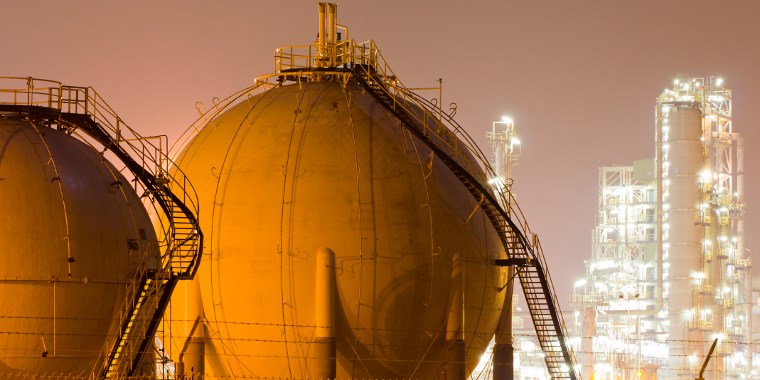^ Large contract for the replacement of side entry valves in an existing LNG installation
Article by Lucien Joppen
___
Natural gas is often described as the cleanest fossil fuel. It produces 25 – 30 % less carbon dioxide per joule delivered than oil and 40 – 45 % respectively than coal. Therefore demand for LNG is steadily increasing. In LNG terminals the imported liquid natural gas is unloaded from gas tankers at special berthing facilities and stored in large LNG storage tanks. In order to keep the gas liquified, the pipelines and the storage tanks withstand a temperature of -162 °C. Before delivering to the transmission network the liquified gas is smoothly warmed up and evaporated.
For these applications top entry valves are preferred since the central top flange can be removed and all internal components can be easily extracted from the body. This is not the case for side entry valves. Mü ller Quadax GmbH has been awarded a large contract for top entry butterfly valves to replace side entry valves in an existing LNG installation and for an extension with one new LNG terminal.
Located in Europe, this terminal enables access into the Northwest European gas market having an initial throughput capacity of 12 billion cubic meters per year (bcma), which in the future will be extended to 16 bcma. This terminal is also equipped with 3 loading bays for trucks and a dedicated jetty for smaller (bunker) vessels.
Cryogenic & endurance testing
During storage and transportation natural gas could leak into the atmosphere particularly on critical components like measuring devices and process valves. Besides the negative environmental effect, these fugitive emissions could also have an impact on the security.
The operating company of this LNG terminal therefore requested an individual performance test for the approval of cryogenic valves which shall be installed in their terminals and storage tanks. For this purpose the cryogenic test according to BS 6364 has been combined with an endurance test according to EN 12567. The QUADAX four-offset butterfly valve DN 500 mm, ANSI class 150 has been tested at the ITIS test laboratory in the Netherlands specifying 10 thermal cycles with a fugitive emission test at +20 °C and at -196 °C alternating. In addition the requirements included an endurance test of 500 mechanical cycles at -196 °C, measuring the internal and external leakage after determined cycles. The benchmark in terms of the seat leakage was less than 3000ml/min for a valve of DN 500 mm based on BS 6364 and a maximum allowable fugitive emission of ≤1.0•10–3 mbar•l•s–1 at any time during the cycles. The valve was tested with helium at 19 bar test pressure with the seat leakage and fugitive emissions measured after 20/40/80/150/300 and 500 cycles.
The test institute ITIS BV certified that the seat leakage never exceeded a low value of 590 ml/minute and after 500 cycles zero leakage at all could be detected. Moreover, the fugitive emission at the bonnet and trunnion gaskets of the top entry valve never exceeded a value of =1.0•10–5mbar•l•s–1. The round seat and sealing geometry of QUADAX butterfly valves is a totally friction free metal to metal design. Thanks to this round geometry, after a couple of hundred cycles the seat and sealing ring is literally looped-in and provide highest tightness even if material is shrinking and expanding due to extreme temperature differences.
Finally, QUADAX top entry butterfly valves fully satisfy the requirements of the EN 1473-2016 specifications for valves and are specifically designed for LNG applications where control and maintenance work can be performed safely and easily in the installed position without further risks for the service personnel.



